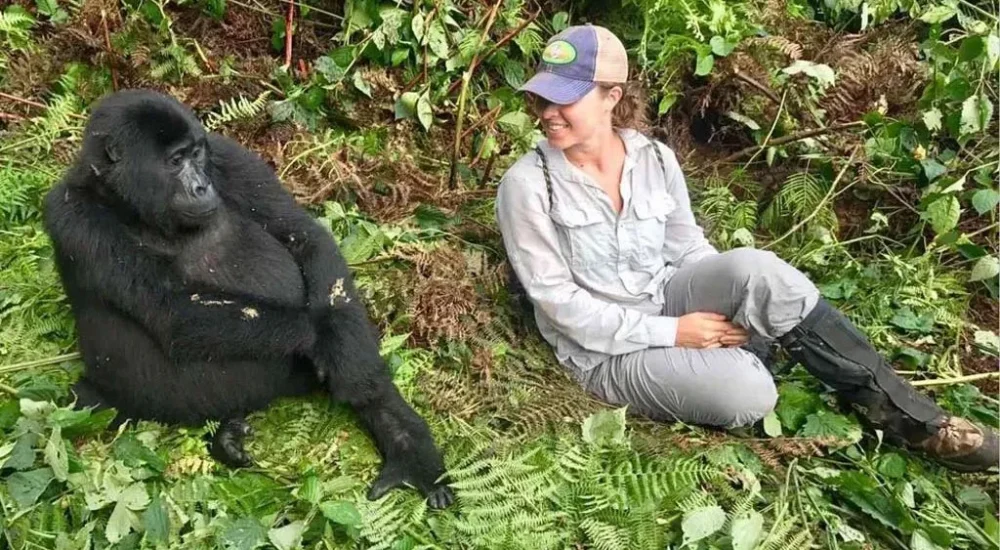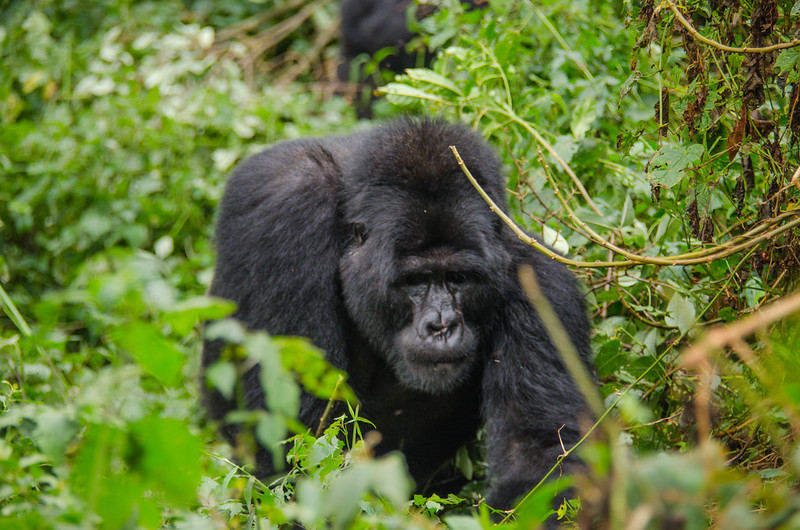How Many Gorillas Are Left In The World?
How Many Gorillas Are Left In The World? The World Wildlife Fund and the International Union for Conservation of Nature both say that the number is less than 200,000. It’s important to know why these rare primates are going extinct so quickly and what we can do to help stop their numbers from going down even further before it’s too late. Their habitat is quickly disappearing and their numbers are dropping at an alarming rate. Learn about the gorillas that are going extinct around the world, including how many are left, why they’re going extinct, and what we can do to save them.
The largest member of the ape family is the gorilla. Most gorillas are vegetarians, which means they eat plants, but some are omnivores and eat small animals for meat. Because of this, they mostly live in the warm forests of Africa near the equator. They sometimes live deep in the woods, but they spend most of their time on the ground. There are two main kinds of gorillas, the eastern and western, as well as four or five subspecies. People think that the gorilla is the next most closely related live animal to humans, after the chimpanzee and the bonobo. This is because, based on what is compared, they share 95 to 99% of our DNA.
11 days of the best safari in Uganda
There are two main types of gorillas right now. The western gorilla and the eastern gorilla are the names for these two groups. It is important to remember that each of these animals has two types. The well-known mountain gorilla and the Eastern lowland gorilla are both in the eastern gorilla species. There are two types of western gorillas: cross-river gorillas and western lowland gorillas.
The only things that make these two species different are their shapes and the sounds they make when they talk. One more thing that might make them different is where they live or where their environment is. Most of the time, the eastern gorilla is bigger than the western gorilla. But they are all linked by the fact that their natural surroundings are being destroyed.
How many Gorillas are there still?
The International Union for the Conservation of Nature (IUCN) says that all of these gorilla species are among the most seriously endangered species of mammals. This has been seen over the past few decades because of things like poaching, diseases, and the destruction of their environments, all of which have had a big effect on the drop in the number of gorillas. Now that that’s out of the way, the big question is: how many gorillas are still alive? Well, it is thought that there are between 100,000 and 200,000 western gorillas in the wild, and between 5,000 and 10,000 eastern gorillas.
The Eastern Lowland Gorilla population is about 5,000, the Mountain Gorilla population is about 900, the Western Lowland Gorilla population is about 100,000, and the Cross River Gorilla population is about 200 to 300. It’s important to remember that the number of gorillas has dropped a lot in the last few decades, even though these numbers may seem high. More than 60% fewer people live there now than there were in the 1960s. This drop is mostly because of habitat loss and hunting.
Gorilla Beringei, the well-known mountain gorilla
As was already said, mountain gorillas are from the Gorilla beringei species, which is an Eastern gorilla. There are a lot of them in the Virunga Mountains in Uganda, Rwanda, and the Congo. About 880 mountain gorillas live in this area. Over the past 20 years, these numbers have dropped by more than 70% because of poaching for bushmeat and ecosystem destruction for farming and human settlement.
Mountain gorillas are mostly in danger from people who want to eat them and destroy their environment. People destroy habitats when they cut down woods to make room for farms or towns. The mountain gorilla’s main food source is monkeys, who live in trees that people cut down. This makes it harder for the monkeys to find food and water from natural streams that run through the mountains where the gorillas live. There are other reasons why trees are cut down illegally for firewood, lumber, and illegal mining.
Is it better to go gorilla trekking in Rwanda or Uganda?
The mountain gorilla is one of the most interesting animals in the world. Encounters with these great apes are thought to be some of the best wildlife experiences because they look and act a lot like people. There are mountain gorillas only in three places: Rwanda, Uganda, and the Democratic Republic of the Congo. Uganda is the best place to see mountain gorillas because it is home to more than half of the living species.
So many people go on Uganda Gorilla Safaris, where they can search for these big cats in Mgahinga and Bwindi Impenetrable National Parks. Virunga National Park in the DR Congo and Volcanoes National Park in Rwanda are both places where you can see mountain gorillas. Mountain gorillas have thick black fur that makes them stand out from the brownish western and eastern lowland gorillas. Also, their arms are shorter than those of their lower relatives.
Through a process called “gorilla habituation,” wild mountain gorillas are taught to get used to people. It could take two to three years for gorillas to get used to humans. During that time, experts keep going to see a known group of wild gorillas every day. They learn more about the habits and behaviors of certain gorillas.
As the researchers get to know each monkey better over time, they give each one a name. Scientists set up a fake exercise with a small group of people, such as scientists and members of the media, once they are sure that these mountain gorillas can be walked. Before a gorilla family can go hiking, they have to do a practice run and do it well.
The Gorilla of the Eastern Lowlands
The eastern lowland gorilla, which is also known as Grauer’s gorilla, is thought to be the biggest of the four gorilla subspecies. It’s not like other gorillas because it has a short snout, big hands, and a stocky body. Even though they are very big, eastern lowland gorillas, like other gorilla types, eat mostly fruit and other plant-based foods.
For years, there has been a lot of fighting in the Democratic Republic of the Congo (DRC), which has hurt both the mountain and eastern lowland gorillas. The eastern lowland gorilla lives in the lowland tropical jungles of the eastern DRC. A little over fifty years ago, its area was 8,100 square miles. Now, it’s only about 4,600 square miles. In the past, this form may have lived in only 13% of its past range. There were about 17,000 eastern lowland gorillas in the wild in the middle of the 1990s. However, biologists think that the number has dropped by more than 50% since then.
There has been fighting in the area, so it has been hard to get a correct count of the animals.
The Gorilla of the Western Lowlands
One of the big apes that is in the most danger is the western lowland gorilla. The exact number of western lowland gorillas is unknown because they live in some of Africa’s densest and most remote rainforests. However, it is thought that there are only about 100,000 of them left in the world, and their numbers are still going down because their homes are being destroyed and they are being poached.
You can find these animals in Gabon, Cameroon, the Central African Republic, and the Congo. These countries aren’t likely to be able to get better any time soon because of war and cutting down trees. They are in a lot of danger because people kill them for bush meat or as bycatch, which lowers the number of them in the wild.
Western lowland gorillas are different from other gorilla types because they are a little smaller, have brown-gray coats, and chests that are a darker color. They also have bigger heads with stronger brow lines and smaller ears. The number of western lowland gorillas has not stopped going down, even though there are a lot of them.
As was already said, sickness and hunting have caused the number of gorillas to drop by more than 60% in the last 20 to 25 years. Even if all threats were taken away, scientists think it would take the population of western lowland gorillas about 75 years to recover.
The Gorilla of the Cross River
The last count in January 2017 found that there are only about 250 Cross River gorillas left in the world. Most of the time, these gorillas live in Nigeria and Cameroon. Gustav Nachtigal was the first person to find them in 1904. They were named after the river that divides these two countries. Cross River gorillas are in danger because people are poaching them and destroying their environment.
People also bring diseases that can infect them. More than half of them are thought to have died from illnesses like Ebola and malaria. To save the last few Cross River gorillas, both countries need to work together to stop poaching, raise knowledge about how their numbers are dropping, and build a safe place for them to live.
Gorillas that live in zoos and sanctuaries
For the most part, gorillas live in the wild. However, some live in zoos in North America and Europe or in protected areas in Africa. At the moment, there are no gorilla preserves outside of Africa. Wild gorillas are the only ones that live in zoos. Koko and Ndume, two western lowland gorillas, used to live at the Gorilla Foundation in Northern California.
The Gorilla Foundation took the picture.
The Gorilla Foundation has 71 acres of beautiful tropical land on the Hawaiian island of Maui. The land is leased (and paid for) until 2058, but the foundation has the opportunity to buy the land and maybe even more land around it. Two gorillas named Koko and Ndume had planned to live here in a future safe place. There still needs to be a safe place for gorillas who aren’t used to living in zoos, even though Koko died in 2018 and Ndume went to the Cincinnati Zoo in 2019. So, we are looking into ways to work together to make the KokoMaui Sanctuary a real thing and an important part of Koko’s legacy.
Main reasons why gorillas are going extinct
Each of the four subspecies of gorilla faces risks, but the types and levels of these risks rely on where the gorillas live. There are many things that put wild gorilla groups at risk, such as habitat loss, disease, and hunting.
Going on hunts: Gorilla hunting is one of the biggest problems for the population. It is against the law to hunt, kill, or eat gorillas, but the criminal bushmeat trade has killed off many of the animals. The International Union for Conservation of Nature (IUCN) says that poachers, opportunistic shooters, and traps meant for other animals also try to catch gorillas. Lowland gorilla poaching has gone up because new logging and mining paths make it easier for animals to get to the deep woods.
Lack of Habitat: Loss of habitat is a threat to all great apes, including gorillas. The threat varies by area in how bad it is. For instance, plantations and industrial mining separate gorilla groups by destroying forest habitats. Most of the habitat loss for the Cross River and eastern gorillas is caused by human settlements, such as illegal logging, agricultural growth, and pasture expansion. It has been said that 59% of the Cross River gorillas’ environment was lost between 1995 and 2010.
Diseases: The IUCN says that sickness is the second most common reason why the number of western lowland gorillas drops. Since the 1980s, the Ebola virus has killed a lot of great apes, often with 95% death rates. Both Eastern and Cross River gorillas can get diseases that people have.
To sum up, the question of how many gorillas are still alive is a very important one that is hard to answer. One reason it’s hard is that no one has ever made a full count of all the gorillas in the world. But the figures come from a number of smaller censuses that have been held in different parts of the world. It’s still true that the gorillas are going extinct quickly and will be gone soon if we don’t do something.


